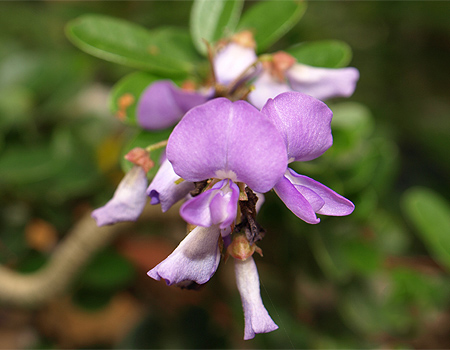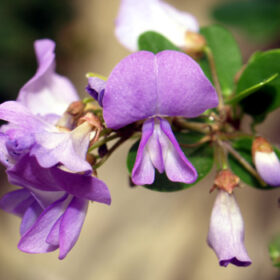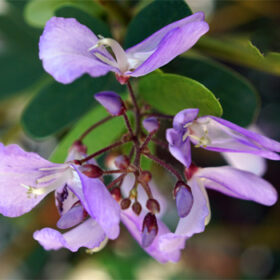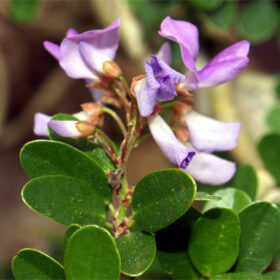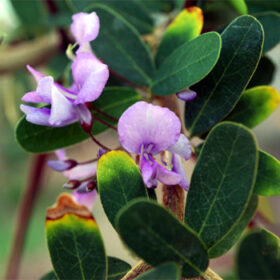Identification Characteristics:
A small shrub, typically 2 to 5 meters tall, with a stem diameter of 5 to 7 cm. The stem is hard, exhibiting a white, mottled appearance, and features fine longitudinal cracks. Young branches are glabrous (hairless). At the tips of the young branches, there are 2-3 spines, 3-5 cm long, very sharp and hardened with age. Leaves are simple, small (8-18 mm), often clustered at the branch tips. They are stiff, with very fine venation, clearly visible on the upper surface. Stipules are early-deciduous (fall off early) but persist at the base of the leaves. Leaf petioles (stalks) are short, approximately 1-1.5 mm. Flowers grow in clusters at the branch tips and in the leaf axils (the angle between a leaf and the stem), are small, and deep purple, with numerous flowers. The fruit is a legume, borne in clusters, with the characteristic segmented appearance typical of the Desmodium genus.
Biology and Ecology:
Found scattered in coastal forests and dry, low-altitude forests. Flowering occurs at the end of the dry season and the beginning of the rainy season, from August to February. The plant is drought-tolerant and thrives in arid, harsh environments. Seed regeneration is good.
Distribution:
This species may be endemic to Vietnam, currently only observed in Khánh Hòa (Diêm Khánh, Hòn Bà), and Núi Chúa National Park – Ninh Thuận.
Value and Conservation:
The plant is cultivated as an ornamental tree and for bonsai, making it highly sought after, and subject to intense harvesting, which could lead to depletion. It should be considered for inclusion in the Vietnam Red Data Book and the relocation of some specimens to the botanical garden of Núi Chúa National Park.

